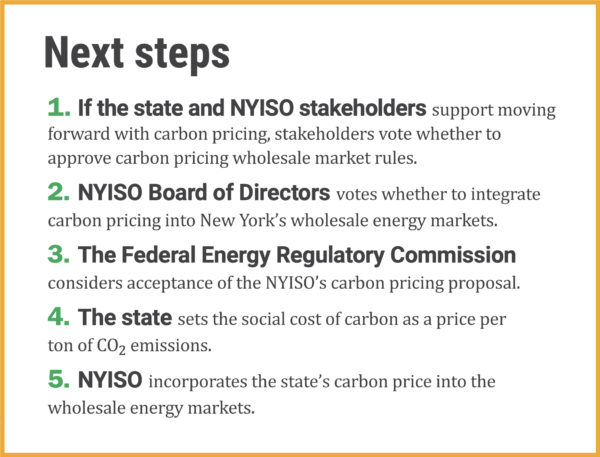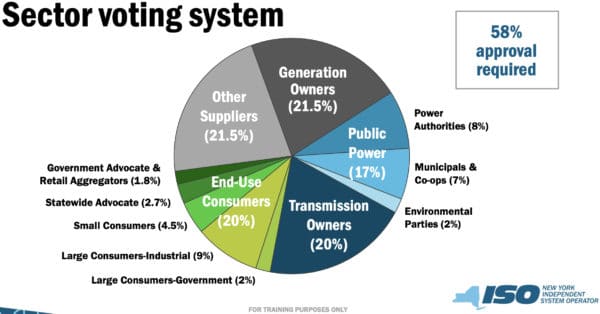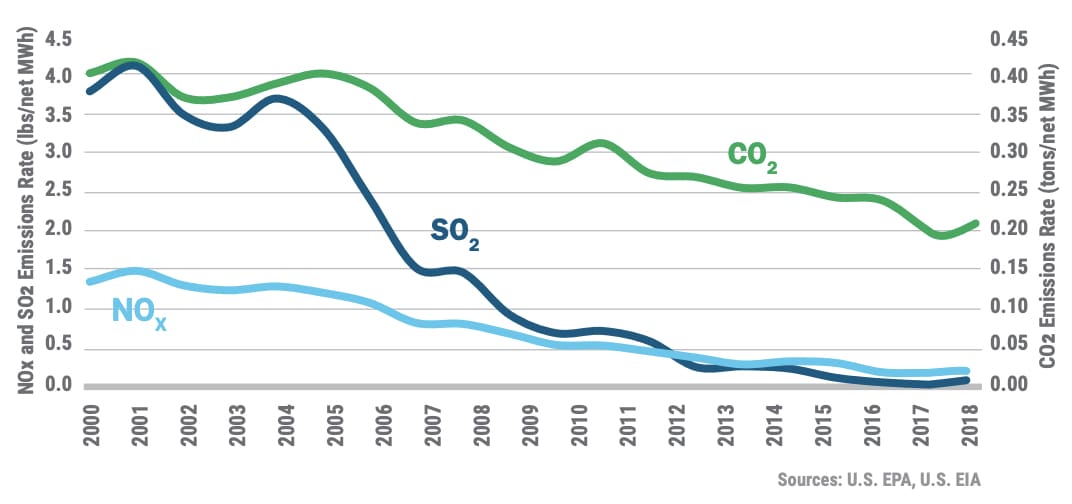In line with its goal for solar to reach 20% of U.S. generation by 2030, the Solar Energy Industries Association (SEIA) has joined a coalition calling for carbon pricing for wholesale electricity in New York.
As part of its “Solar+ Decade” plan released in September, SEIA “committed to collaborating with organizations that share our vision,” said David Gahl, SEIA’s senior director of Northeast state affairs, in a press release. “Joining the Carbon Free New York Coalition is one way SEIA is delivering on that promise.”
By making fossil-generated wholesale power more expensive, carbon pricing would favor clean solar and wind power. NYISO, New York’s independent grid operator, developed the carbon pricing proposal and sees it as supportive of New York’s recent law calling for 100% zero-emitting energy generation by 2040.
Rich Dewey, president and CEO of NYISO, made the case for carbon pricing in a NYISO fact sheet:
“To achieve the state’s environmental goals, you need innovation. And for that, you need markets. We’ve got to work together and recognize that markets are a vehicle for success.”
Gahl added in an interview that “carbon pricing would be an important reform for the wholesale market. It would level the playing field to some extent for renewable producers — and it’s the right policy for New York.”
Besides SEIA, others joining the Carbon Free New York Coalition include two solar developers, sPower and CS Energy, and five wind and solar developers—Apex Clean Energy, EDP Renewables, Innogy, Invenergy, and Northland Power.
Five “next steps”
NYISO’s fact sheet lists five “next steps” for the carbon pricing proposal.
State support to move forward (in step 1), said a NYISO spokesperson, could be an expression of support from either Governor Andrew Cuomo, the New York Public Service Commission, NYSERDA—the state’s renewable energy and energy efficiency authority, or the Climate Action Council created under the recent clean energy law. NYISO stakeholders, shown in the pie chart below, would also need to support the proposal by a 58% majority.
The next step would be approval by the NYISO board of directors (step 2). Then federal regulators would need to approve it (step 3)—a topic explored in depth in a carbon pricing analysis prepared by the Analysis Group, and commissioned by NYISO.

Next, David Gahl of SEIA said the New York State Department of Environmental Conservation would establish the social cost of carbon, as specified under the state’s clean energy law, the Climate Leadership and Community Protection Act (step 4).
The final step would be a matter of NYISO execution and administration of carbon pricing (step 5).
This content is protected by copyright and may not be reused. If you want to cooperate with us and would like to reuse some of our content, please contact: editors@pv-magazine.com.








Where does the money go that’s collected from this carbon pricing tax?
To Governor Cuomo: I’ve seen more progress towards Solar when you positivity incentivize everyone’s benefit. For example: by offering true net metering
you have more citizens convert over to solar than say partial net metering where the customers only receive a50% benefit.
By forcing this new tax on consumers and those that generate electricity your causing consumers to believe solar is too expensive. Your not incentivizing the benefit in a positive light. Citizens will start to grumble, I can here it now, that Cuomo jacked up my electricity bill by 20%! New Yorkers are already highly taxed, so don’t give them another reason to complain and change their vote. Show them the economic benefit of your plan! Show them how much the consumer will save as a result of switching!